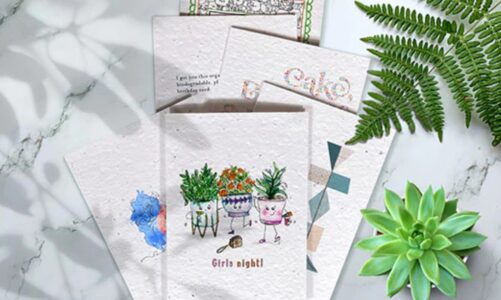To most of us, our hair is precious to both males and females. The hair on our head is dubbed as the “crown” of our body, and it may represent freedom, femininity, identity, and liberation for women (read more). I mean, who could blame us? Our beautiful strands make us look more beautiful or handsome, especially when we are well-groomed!
We have many ways of improving our look with our hair. That includes styling, cutting, growing it out, clipping it with clips, curling it, bleaching, and dyeing it with different colors. We love to try new things, and many of us may even try out dyeing our locks to have a fresh look. I mean, why not.
Dyeing sounds like a good idea. It would make you feel unique, beautiful, a sense of identity, or even to represent something about yourself. But despite having a great new look by dying your locks, there may be some issues you will not know about. With that, here are some things you have to know before dyeing your hair!
What Is Hair Coloring?
Hair coloring or dyeing is the process of coloring your locks into different colors or colors using chemicals. There are various applications, depending on which color you would like to dye. These are categorized as off-scalp and on-scalp. The off-scalp has a modern application that allows us to have different kinds of colors for our locks at the same time. These are Lowlighting, Highlighting, and Splashlighting.
Lowlighting darkens your locks’ color using dark colors, highlighting lightens, and splash lighting is a technique that highlights horizontally, creating a band or a line. For on-scalp applications, we have All-over color where all your strands are dyed, Block coloring where a person can have 1 or 2 colors on their locks, creating a contrast. And finally, Root touch-up, which you will apply dyes on the most recent regrowth.
Types of Hair Coloring
- Temporary
Temporary dyes are pigmentations for your hair that could easily remove through showering and shampooing. These are readily available in the market in foam, spray, gel, and shampoo. The pigments have high molecular weight particles, which make them unable to enter your cuticles. The pigments only adhere to the shaft of a strand and are usually vibrant in color. The temporary pigmentation is generally being used in events like cosplaying or anything that involves using costumes.
- Permanent
When there is temporary, there is also permanent. This type uses the power of chemicals like “ammonia” mixed with an oxidizing agent, also known as developer agent, to change your locks’ pigmentations permanently. The idea of this is to make your natural hair pigment into a dyed one when it grows out of your cuticles.
Ammonia is a chemical agent that opens your hair’s cuticles to allow the oxidizing agent to pass through. The brightness of the pigments for your locks depends on how much volume you use the oxidizing agent. The darker your strands’ color, the more you need to use the oxidizing agent for brightness.
- Semi-Permanent
This type does not involve ammonia or oxidizing agents, making it a less damaging option for your strands. It has a lower molecular weight than the temporary type, allowing the pigments to wedge on the surface-level cuticles. Although this is less damaging, products of this type may contain a carcinogen that is called p-phenylenediamine (PPD). Carcinogens are agents that may alter the DNA of your cell, increasing the risk for cancer. The other bad thing about this type is that you could not lighten your strands with it.
- Demi-Permanent
Like the Semi-permanent type, this type does not lighten the strand’s shades as it cannot remove the natural pigmentation. The cause of this is the use of alkaline agents such as sodium carbonate and ethanolamine. This type uses a combination of ammonia, alkaline agents, and oxidizing agents but with fewer volumes.
What Are Things We Should Worry?
- It Has A Lot of Responsibility
Yes, I am not exaggerating. Dyeing your hair gives you lots to do, like maintaining the hair color and controlling the damage. To dig deeper, you will be forced to read some instructions on how to treat colored hair, buy necessary shampoos, visits to your parlor, and even maintain your overall health. Additionally, since dyeing can also damage your locks because of chemicals, you would have to treat your strands back to health.
Additionally, dyes have dos and don’ts, and it requires you to know of them. Like for example, some drugs alter the effects of these coloring agents. Another example is that there were unpredictable effects when you bleached your hair when previously bleached.
- It May Not Be Cost-Effective
Depending on your budget, dyeing your locks may not be cost-effective. It requires you a lot of stuff like a specific kind of shampoo, conditioner, and other products that maintain your health’s color and health. There could also frequent visits to the parlor, which may be expensive. Because of that, it requires you some commitment, resolve, and investment before deciding on it.
- It May Cause Some Health Issues
Dyes use chemicals that are harmful to the human skin, such as bleaches and ammonia. The use of chemicals can also cause hypersensitivity, or widely known as allergies, to act up for those specific people out there. On top of that, chemicals are carcinogenic, and as I have discussed above, they may cause cancer like leukemia, bladder cancer, and breast cancer (link: https://www.webmd.com/beauty/is-hair-dye-linked-cancer-risk#1). The more exposed and prolonged use of dye, the higher the risk!
There could also be some discoloration of the skin. Patches of discolored skin may be found along the hairline. The risk for skin discoloration is higher when using darker-colored dyes and dry-skinned individuals.
- It Causes Hair Damage
Dyeing, without a doubt, causes damage to your locks. Colored hair may look beautiful, but it would look like a colorful bush on your head if not treated well. With that said, not only do you have to maintain the dye, but you also have to maintain the health of your locks. And yes, more money to spend on products and treatments.



